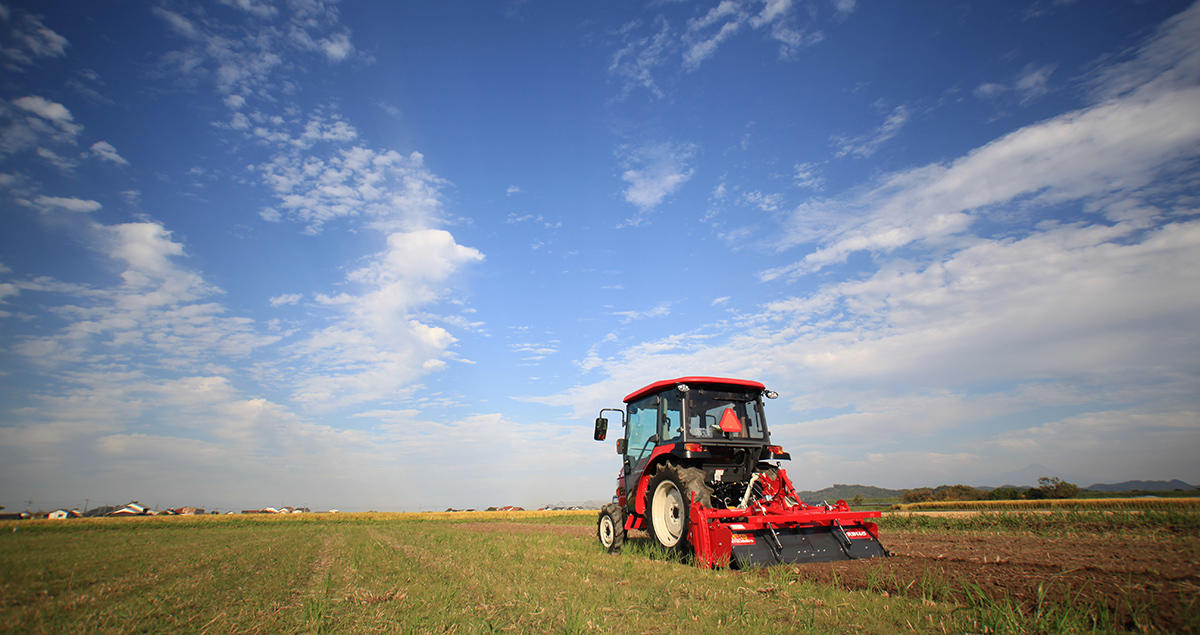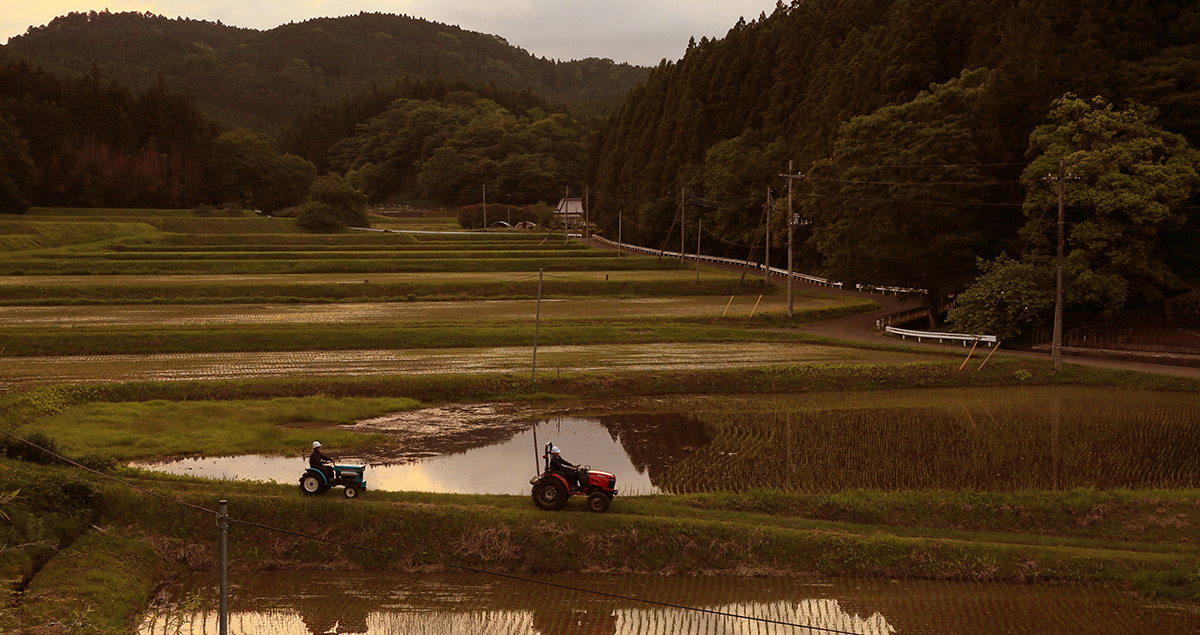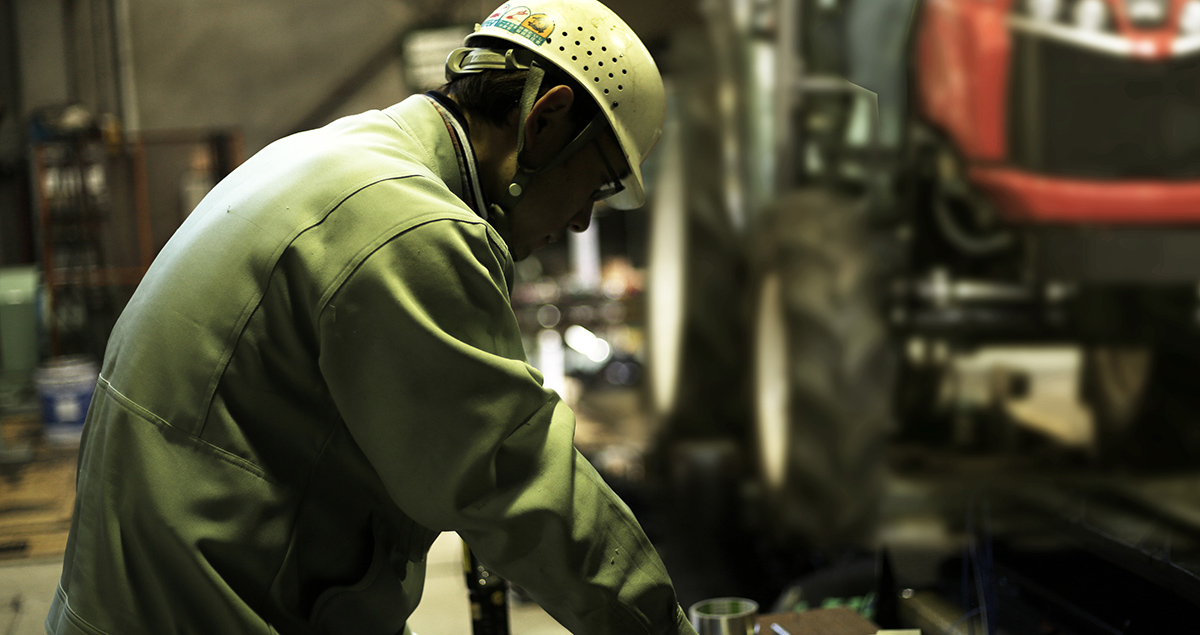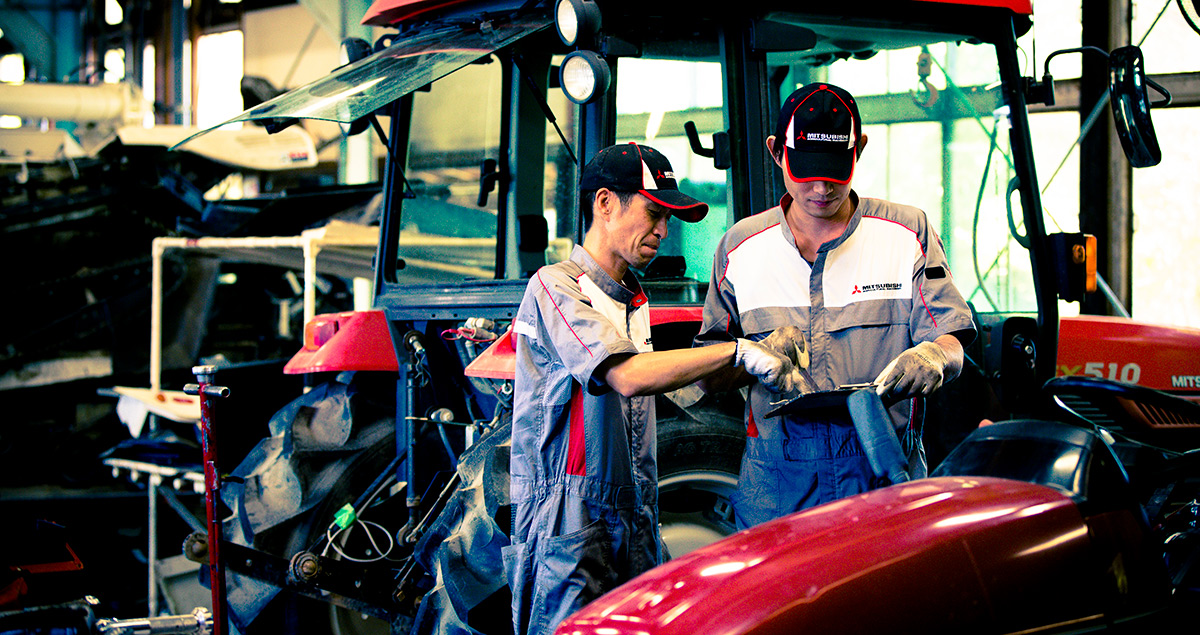Agri machinery’s role in feeding the world

In the global fight to eradicate hunger, it’s the small, local details that make the biggest change. Like, keeping the tractor moving in a straight line.
It may sound simple, but even the most experienced tractor driver struggles to keep a straight trajectory on uneven farmland surfaces. Without constant adjustment, the machine veers completely off-course within about 30 meters, the length of a swimming pool. This can waste arable land, tractor fuel, and time.From this year, one manufacturer decided to give farmers a helping hand, or an eye, to be precise.
Mitsubishi Mahindra Agricultural Machinery (MAM)’s Smart Eye Drive technology relies on a camera installed on the tractor to read the scenery and lay of the land, recognizing ridges made in previous passes. It then sends signals to the machine, based on GPS location, to make micro adjustments in steering, helping even inexperienced drivers utilize 100 percent of their land, according to MAM.

Can Technology Really Help the Poor?
How might this help hunger? After all, most of the countries where hunger is prevalent are also poor, while new technology – especially one that relies on Artificial Intelligence (AI) and other aspects of robotics – comes at a considerable cost.
In this sense, to make a dent in world hunger, which affects approximately one in nine people, or 795 million of the 7.3 billion people on this planet, according to the United Nations Food and Agriculture Organization (FAO), agricultural innovation has to be affordable. As UN data shows, 780 million of the 795 million people suffering from chronic undernourishment live in developing economies.
That is exactly the issue that two years ago led to the birth of MAM, a joint venture between Japanese engineering giant Mitsubishi Heavy Industries and India’s auto and machinery major, Mahindra & Mahindra. The two joined forces to create a manufacturing venture that would marry hi-tech advances with affordability, and bring the technology to those most in need, according to MAM.
“The emergence of self-driving agricultural machines is starting to become a reality, but as we are currently in a transitional period this is still very expensive,” Masayuki Suematsu, the CEO of MAM said in an interview. “What we focus on is promoting labor-saving technology at a low price.”
Mahindra & Mahindra, which has a dominant share of the highly cost-competitive Indian tractor market, took a 33.3 percent stake in the new venture and Mitsubishi Heavy Industries’ agricultural arm the rest. The partners vowed to share technology and marketing nous, and look for ways to provide products that balance function and price.
Working together, the firms found that they could cut the cost of manufacture and of developing new technologies through merits of scale, while also putting together a broad product range that could also appeal to high-end buyers, such as in the U.S.
Keeping a wide product mix is important to be competitive in the farming equipment market, where trends vary between waves of investment into new tractors to purchases of more complex plowing and cultivation machinery to boost land productivity. Tractors represent about 30 percent of all agricultural machinery sales in a market worth more than $120 billion globally, according to Freedonia Group research.

Reaching the Key Market: Small-Scale Farmers
For MAM, the primary objective was to motivate and help with the realization of greater use of farming equipment especially among small-scale farmers. In developing economies, such farmers could make the biggest breakthrough in terms of crop yield increase, improving access to affordable food in their local areas.
This is especially key since population growth is expected to surge the most in poorer nations, while rising use of water for industrial use in major population centers such as China, India and elsewhere is starting to put a strain on local irrigation systems. The UN and other international bodies warn that this, in addition to a broader adoption of a meat-based diet in Asia, which requires exponentially greater water volumes, and climate change, could spark global food shortages.
Hence this “essential” need for mechanization of smaller farmers, according to MAM.
“In response to concerns over a food crisis caused by the expected increase in worldwide population, it is key that we promote the use of better machinery in areas such as India and Southeast Asia to boost farming yields,” Suematsu said.
While India and Japan are quite different in terms of geography and economy, the two share some farming industry traits.
Japan’s agriculture has also traditionally been dominated by smaller landholders, with the average farm size between 1 to 2 hectares, among the smallest in the world. Of Japan’s 2.53 million farmers only a fraction work full-time and for the rest, farming provides less than 15 percent of their income due to a decline in state subsidies over many years.
This means Japanese farmers have looked for efficiencies, including in machinery, to make their labor profitable. Demand for agricultural machines that take on more of the work from the aging farmers, while emitting a lower volume of greenhouse gases to adhere to stricter environment regulations, have motivated technological innovation in Japan.
At Mitsubishi Heavy Industries, this resulted in the development of extremely efficient rice-planting machinery. In Japan, rice seedlings are grown to a certain size in a seedling box and then planted in the field by specialized machinery.

Translating Technology Across Cultures
In India, where the planting is done mostly by hand, spacing between the rice seedlings is often uneven. The same kind of machinery has not been available to help measure sun light and the amount of nutrients in the ground, and hence yields are lower than in Japan.
Mitsubishi Heavy Industries’ know-how in rice-planting appealed to Mahindra & Mahindra, which sought ways to introduce similar technology to India but at a lower cost. Since joining forces, the Indian partner has helped the Japanese side find ways to adapt its technology to suite the price and functionality of emerging economies such as India.
What’s important is that the two companies “by utilizing each other’s strengths” are working for mutual development, and that helps improve both social issues and corporate profits, Suematsu said.
What farming, with its annual cycles, shows us is that any improvement takes time, effort, and a joint effort. That’s why MAM picked the words “Long Life” as its brand concept, said the official.
Eradicating hunger, like company development, is achieved by driving one straight line at a time.
Get connected and learn more about advanced agri-machinery at Mitsubishi Mahindra Agricultural Machinery.





